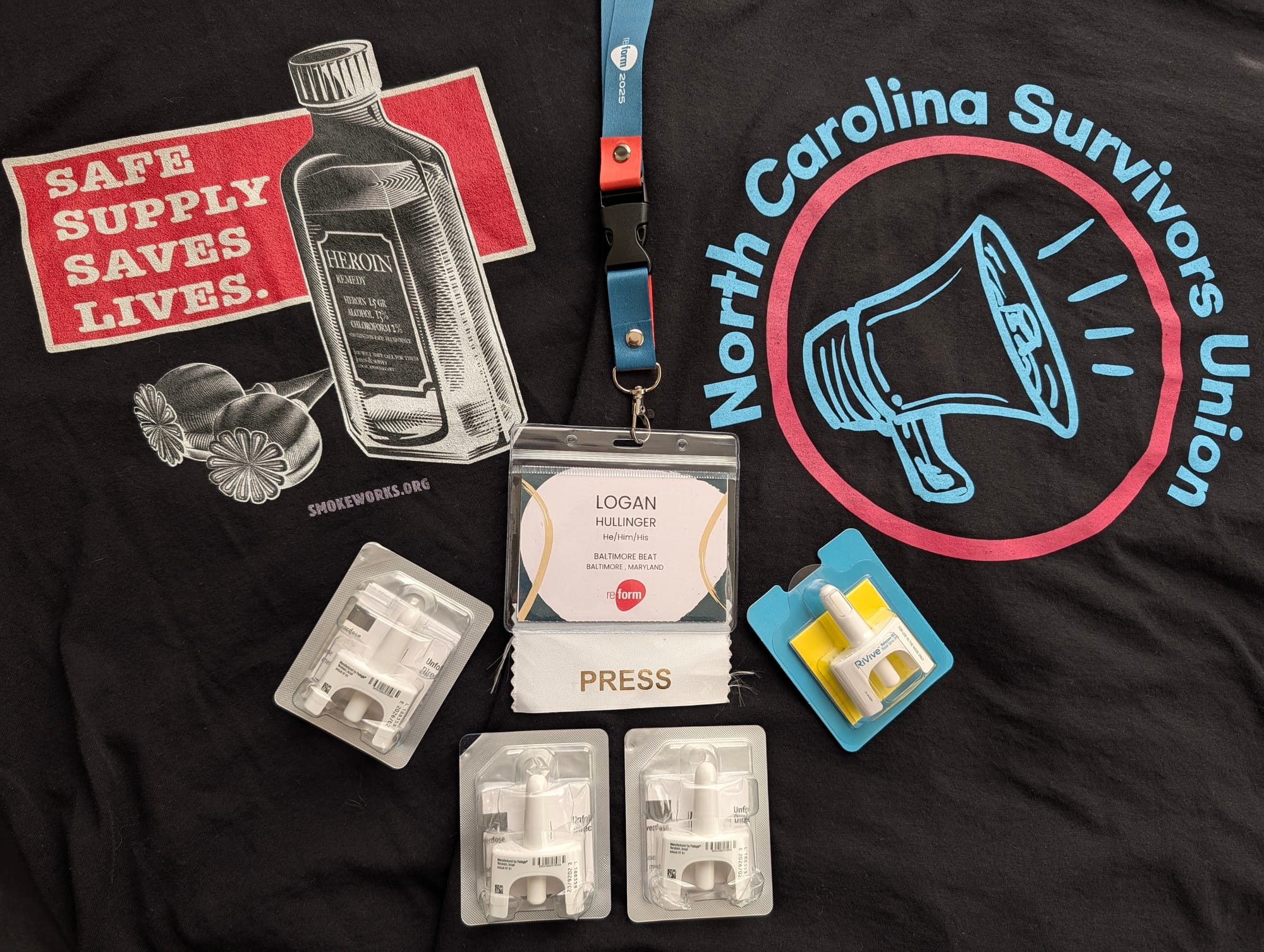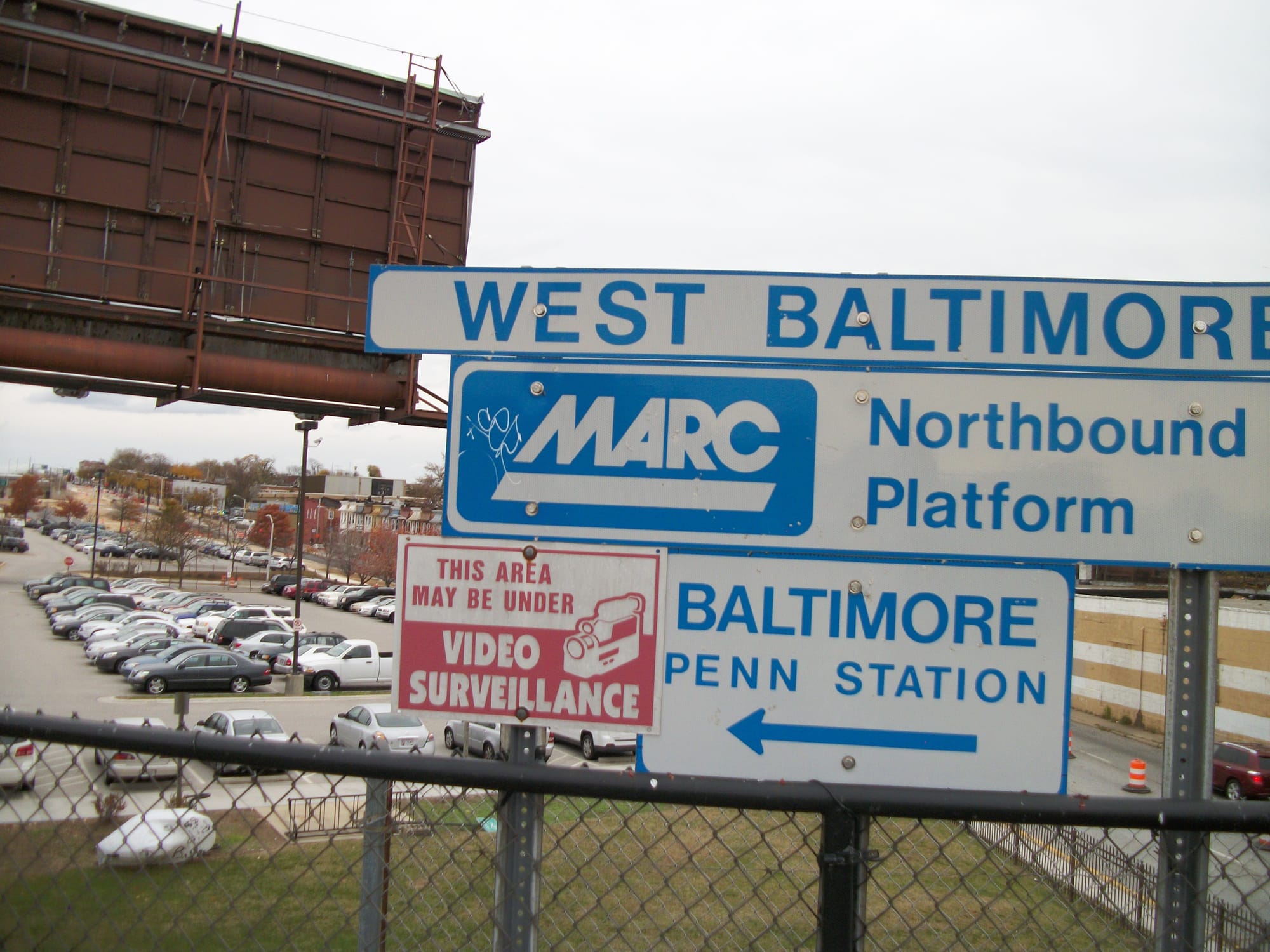
Roughly 1,500 harm reduction workers, addiction and mental health professionals, and others serving those with substance use disorder gathered in Baltimore on April 29 for the 2025 Tuerk Conference, a gathering meant to highlight the latest developments and brightest minds in addiction treatment.
Despite dozens of abstinence-based treatment programs having booths at the conference, it was harm reduction, a movement championing compassionate care for those actively using drugs, that emerged as key in talks about overdose prevention.
Unlike traditional addiction treatment, harm reduction’s philosophy addresses the reality that active drug users have autonomy and the right to care regardless of whether they want to be abstinent. In response, those in the field work to ensure that those who use drugs and engage in other risky behaviors have the means to be as safe as possible.
In recent years, a growing consensus has formed at the epicenter of the nation’s overdose crisis that harm reduction, and not punitive drug policy or forced abstinence, will be crucial to save lives — even as President Donald Trump’s administration simultaneously celebrated “Fentanyl Awareness Day” to justify its drug war-inspired crackdown on fentanyl use.
Christina Dent, an author and speaker at the conference who founded a nonprofit advocating against drug criminalization, spoke of the “Iron Law of Prohibition,” which argues that prohibition and drug enforcement have created a more lethal, unregulated drug supply through arrests and seizures.
“When you criminalize a market, you increase crime and violence. You increase toxicity and contamination. People don’t know what they’re getting,” Dent said. “This approach has continued to grow over time, and what we are doing now has not produced the results that we wanted. In fact, it’s led to an explosion of harm.”
Harm reduction has only grown in popularity in the U.S. and internationally — on the same day as the conference in Baltimore, roughly 1,000 people attended the Harm Reduction International Conference in Bogotá, Colombia.
Advocates say that it’s key to incorporate these practices into drug policy, not in place of traditional addiction treatment, but in addition to it. What works for one person may not work for another, they said.
The Baltimore Harm Reduction Coalition, a local nonprofit that sent a representative to the conference in Colombia, has been a leading voice in advocating for harm reduction policies such as overdose prevention centers, or OPCs, and paraphernalia decriminalization in Baltimore.
“It starts with compassion, and then it goes from there. It’s about meeting the person where they are,” said Cola Anderson, a community organizer at BHRC and the leader of the BRIDGES Coalition, a group of more than 40 organizations advocating for overdose prevention centers, which are considered the gold standard of harm reduction practices.
OPCs, also known as safe consumption sites, are scarce in the U.S., only operating in New York City and Providence, Rhode Island. However, they have been crucial programs in other areas of the world for years.
The facilities allow those who use drugs to bring substances into the facilities to use as they please. They are provided with sterile supplies and resources for services such as housing and addiction treatment. Medical professionals supervise the clients and, in case of overdoses, they can typically revive the individual by using naloxone or simply oxygen.
The BHRC set up a mock OPC under a tent in the convention center. In front of a mirror lay a syringe, a tourniquet and sanitary supplies. Dozens of those in attendance visited the tent, asking questions to local harm reduction workers.
Harm reduction is much more than just OPCs — the movement is responsible for the programs considered linchpins in overdose prevention efforts: naloxone distribution, syringe service programs, and the distribution of drug testing kits. Through such programs, workers can ensure that whether someone wants to be sober or simply continue their lives doing drugs, they remain alive to make the decision.
“[Harm reduction] saves people’s lives,” said August Page, a case manager at the SPARC Women’s Center, a nonprofit harm reduction organization that largely serves women and non-binary individuals. “We want to keep someone alive in order to make the choice for themself, for if they want to be abstinent or not. You’re talking about a choice — the autonomy of a person to choose their own way.”
The importance of harm reduction has been echoed by Baltimore officials, but they have found themselves in a conflicting position — the movement’s core tenets are in direct opposition to much of the city’s drug policies.
Baltimore State’s Attorney Ivan Bates did away with his predecessor’s de facto decriminalization policy, and the Baltimore Police Department continues to arrest those who use drugs at high rates — forcing people into a carceral cycle that upends their lives. These arrests disproportionately impact Black people and have been proven to increase overdose death rates.
In light of that reality, harm reduction advocates have pushed for OPCs and paraphernalia decriminalization in Maryland as a whole. However, Mayor Brandon Scott has refused to endorse city-sanctioned OPCs or decriminalization measures, only endorsing bills at the state level that have repeatedly died in committee over the years. This past General Assembly session was the first time these bills were listed as legislative priorities for Scott.
Sara Whaley, the city’s executive director of overdose response, said an important part of the fight against the overdose crisis will be policy advocacy, largely composed of legislative pushes for enhancements to addiction treatment and harm reduction initiatives. Both areas have been proven effective and are deemed crucial in addressing the crisis, yet they often serve different types of people.
“We can’t get in our own way,” Whaley said about the city’s policing of those who use drugs. “We have to work in alignment.”
Whaley is tasked with overseeing the city’s proposed holistic response as Baltimore receives hundreds of millions of dollars from opioid-related lawsuits to combat the crisis.
The city is slated to receive nearly $670 million — about $206 million of which has already been acquired — from five settlements and a jury verdict part of an ongoing lawsuit against McKesson and Cencora, formerly AmerisourceBergen. Most of the money is expected to be received by the end of this year.
In the second phase of that trial, the city is seeking $5.2 billion to abate the damages allegedly caused by the companies, with the lawsuit predicated on the assertion they fueled the overdose crisis by recklessly peddling opioids.
Baltimore City Circuit Court Judge Lawrence P. Fletcher-Hill has said he will rule on whether the companies must pay the city by May 6.
“In comparison to the profits that these companies received, I think this [money] pales in comparison, and it also pales in comparison to the cost of this crisis on the individuals who are impacted and their families in our community,” Whaley said.
Scott, who created the governance structure for the money through an executive order last year, was lauded at the conference for the city’s efforts to take pharmaceutical companies to court to fund overdose prevention efforts. Instead of joining statewide litigation, the city opted to pursue litigation independently to ensure it received as much money as possible. Initially considered a risky move, it paid off greatly.
Scott received two awards: the Chairman’s Leadership Award for the city’s progress on fighting the overdose crisis and a citation from Gov. Wes Moore recognizing efforts to reduce overdoses and expand equitable access to substance use care.
“We know there are no simple solutions to such a complex problem, but together we’ve worked to mitigate harm and ensure accountability for those responsible,” Scott said at the conference.
“From top to bottom, this is about building a Baltimore where people impacted by the overdose crisis are supported, safe, and thriving.”
Yet Scott’s budget for the upcoming fiscal year has raised concerns from those who want restitution funds to grow harm reduction and recovery initiatives rather than maintain the status quo.
The mayor’s proposed budget suggests using about $37 million from the new Opioid Restitution Fund to combat the overdose crisis. However, a large chunk of that money will replace money the city initially allocated from the general fund, a practice known as supplantation.
Last month, members of Scott’s administration and those on the new Opioid Restitution Advisory Board expressed concerns about using the restitution funds to replace existing spending rather than augmenting overdose prevention efforts with new initiatives. Those concerns resurfaced at the board’s meeting on April 30.
Numerous states have explicitly outlawed the practice, and the Johns Hopkins Bloomberg School of Public Health, which has published guiding principles for how states and cities should use restitution funds, has explicitly warned against the practice.
Public health experts, city officials and harm reduction advocates have made it clear the significance of the moment — and the need to use the funds to build more harm reduction initiatives — are not lost on them.
After a decade defined by a swelling overdose death toll, Baltimore saw a historic drop last year. The numbers have provided a new wave of optimism among officials, though they’ve emphasized the battle is far from over.
There were 774 overdose deaths in Baltimore last year, a 28.5% decrease from the year prior, which marks the largest single-year drop in at least a decade, according to data from the Maryland Department of Health. The last time the city saw fewer than 800 overdose deaths was in 2017, when 761 deaths were reported.
The lower death rate has seemingly continued into 2025, with 679 deaths in the 12-month period ending in March. While the decline is part of a national trend, public health experts have said harm reduction initiatives have undoubtedly played a role in driving down overdose deaths.
“Here we are in an upswing,” Dent said. “Instead of a harm explosion, we can focus on harm reduction… It helps people stay alive first. It helps them to stabilize their lives, which reduces harm to the people around them. It gives them connection points with health care. It helps them to stay connected and deepen bonds with their community, with their family. Ultimately, it helps support the process of rebuilding rather than destroying.”








Comments